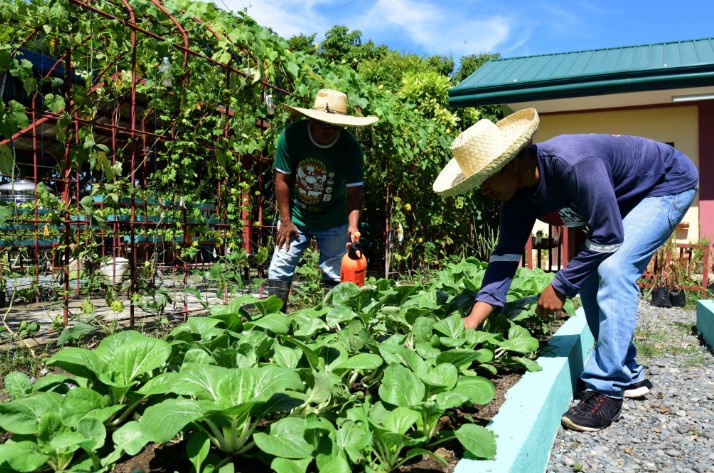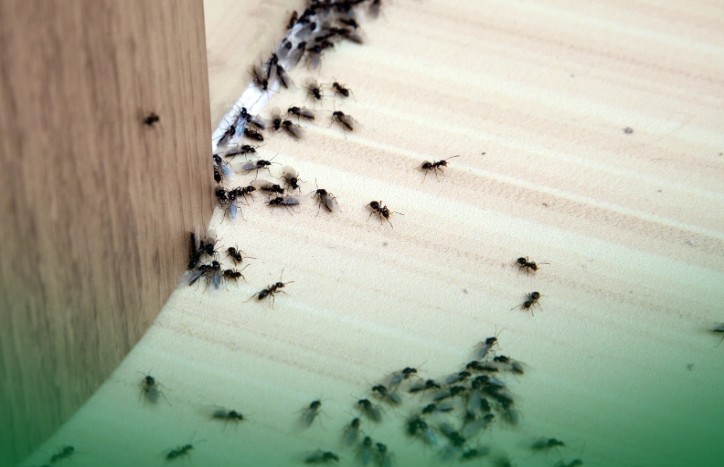Backyard Gardening: A Comprehensive Guide

Introduction to Backyard Gardening
Backyard gardening is more than just a hobby; it’s a way to connect with nature, provide fresh produce for your family, and create a beautiful, relaxing outdoor space. The importance and benefits of backyard gardening cannot be overstated. It not only offers a source of fresh, organic vegetables and fruits but also contributes to physical and mental well-being. Historically, home gardening has been a cornerstone of self-sufficiency, especially during times of economic hardship and food shortages.
Planning Your Backyard Garden
Assessing Your Space
Before you start digging, it’s essential to assess your available space. Measure the area, note the amount of sunlight it receives throughout the day, and observe any potential obstacles like tree roots or rocky soil. This initial assessment will guide your plant choices and garden layout.
Choosing the Right Plants
Selecting the right plants for your garden depends on your climate, soil type, and personal preferences. Consider starting with easy-to-grow vegetables like tomatoes, lettuce, and carrots, or herbs like basil and mint. Native plants are also a great choice as they are well-adapted to your local conditions.
Designing Your Garden Layout
A well-designed garden layout maximizes space and productivity. Use raised beds for better soil control, and consider vertical gardening techniques for small spaces. Plan pathways for easy access to all parts of your garden and group plants with similar water and sunlight needs together.
Essential Tools and Supplies
Basic Gardening Tools
Invest in high-quality gardening tools to make your gardening tasks easier. Essential tools include a spade, hoe, rake, watering can, and a pair of pruning shears. These tools will help you with digging, planting, weeding, and maintaining your garden.
Soil and Fertilizers
Healthy soil is the foundation of a successful garden. Test your soil to determine its pH and nutrient levels. Based on the results, you may need to amend your soil with compost, organic matter, or specific fertilizers to ensure your plants have the nutrients they need to thrive.
Irrigation Equipment
Efficient watering is crucial for plant health. Consider installing a drip irrigation system or soaker hoses to deliver water directly to the roots, reducing water waste and preventing disease. A rain barrel can also be a sustainable way to collect and use rainwater for your garden.
Preparing the Soil
Testing Your Soil
Before planting, test your soil to understand its composition and nutrient levels. Soil testing kits are available at garden centers, or you can send a sample to a local agricultural extension office for analysis.
Amending the Soil
Based on your soil test results, amend your soil to improve its structure and fertility. Adding organic matter like compost or well-rotted manure can enhance soil texture, increase water retention, and provide essential nutrients.
Mulching Techniques
Mulching helps retain soil moisture, suppress weeds, and regulate soil temperature. Use organic mulches like straw, wood chips, or grass clippings around your plants to improve soil health and reduce maintenance.
Planting Your Garden
Starting from Seeds vs. Seedlings
Deciding whether to start from seeds or seedlings depends on your gardening goals and patience level. Seeds are more cost-effective and offer a wider variety of plants, but they require more time and care. Seedlings, on the other hand, provide a head start and are less susceptible to early-stage problems.
Planting Techniques
Proper planting techniques are crucial for healthy growth. Follow spacing recommendations on seed packets or plant tags, and plant at the correct depth. Water thoroughly after planting to help plants establish strong roots.
Companion Planting
Companion planting involves growing certain plants together to enhance growth, deter pests, and improve soil health. For example, planting basil next to tomatoes can repel pests, while beans can fix nitrogen in the soil, benefiting nearby plants.
Watering Your Garden
Best Practices for Watering
Watering your garden correctly is vital for plant health. Water deeply and infrequently to encourage deep root growth. Early morning is the best time to water, as it allows plants to absorb moisture before the heat of the day.
Watering Schedules
Establish a watering schedule based on your climate, soil type, and plant needs. Generally, most gardens require about 1 inch of water per week, but this can vary. Adjust your schedule during periods of extreme heat or rainfall.
Drought-Tolerant Gardening
In areas prone to drought, choose drought-tolerant plants and incorporate water-saving techniques like mulching and drip irrigation. These practices help conserve water while maintaining a healthy garden.
Maintaining Your Garden
Weed Control Methods
Weeds compete with your plants for nutrients, water, and light. Regular weeding is essential to keep your garden healthy. Use mulch to suppress weeds and remove them by hand or with tools to prevent them from taking over.
Pest Management
Pests can wreak havoc on your garden, but there are many ways to manage them. Encourage beneficial insects like ladybugs and predatory beetles, use natural repellents, and consider organic pesticides as a last resort.
Pruning and Deadheading
Pruning and deadheading are important for plant health and aesthetics. Remove dead or diseased branches to prevent the spread of disease, and deadhead spent flowers to encourage new blooms.
Seasonal Gardening Tips
Spring Gardening Tips
Spring is a busy time in the garden. Start seeds indoors, prepare your soil, and plant cool-season crops like lettuce and peas. As the weather warms, gradually introduce your seedlings to the outdoors.
Summer Gardening Tips
Summer heat can be challenging for gardens. Water deeply, mulch to retain moisture, and provide shade for sensitive plants. Harvest frequently to encourage continued production.
Fall Gardening Tips
Fall is the time to plant cool-season crops and prepare your garden for winter. Clean up spent plants, add compost to your soil, and plant cover crops to protect and enrich the soil over winter.
Winter Gardening Tips
Winter gardening involves protecting your plants from cold temperatures. Use row covers or cold frames to extend the growing season, and plan for the next year’s garden by reviewing your successes and challenges.
Organic Gardening Practices
Benefits of Organic Gardening
Organic gardening avoids synthetic chemicals, promoting a healthier environment and safer produce. It enhances soil health, supports biodiversity, and reduces pollution.
Organic Fertilizers and Pesticides
Use organic fertilizers like compost, manure, or fish emulsion to nourish your plants. For pest control, consider natural options like neem oil, insecticidal soap, or introducing beneficial insects.
Composting
Composting is an excellent way to recycle garden and kitchen waste into valuable soil amendments. A well-maintained compost pile provides a rich source of nutrients for your garden.
Dealing with Common Gardening Challenges
Soil Erosion
Prevent soil erosion by planting ground covers, using mulch, and building terraces on slopes. These methods help maintain soil structure and prevent nutrient loss.
Plant Diseases
Plant diseases can spread quickly if not managed. Use disease-resistant plant varieties, practice crop rotation, and maintain good air circulation to reduce disease risk.
Weather Extremes
Weather extremes like heavy rain, drought, or frost can damage your garden. Protect plants with row covers, mulch, and proper watering techniques to mitigate the impact of extreme weather.
Attracting Wildlife to Your Garden
Planting for Pollinators
Attract pollinators like bees and butterflies by planting a variety of flowering plants. Choose native species and provide a continuous bloom throughout the growing season.
Creating Bird-Friendly Habitats
Birds can be beneficial for pest control. Create bird-friendly habitats by providing food, water, and shelter. Plant berry-producing shrubs and install bird feeders and baths.
Beneficial Insects
Encourage beneficial insects like ladybugs, lacewings, and predatory beetles to keep pest populations in check. Plant diverse crops and avoid using broad-spectrum pesticides to support these helpful creatures.
Harvesting Your Garden
When and How to Harvest
Knowing when and how to harvest is crucial for the best flavor and quality. Harvest vegetables when they are young and tender, and fruits when they are fully ripe. Use clean, sharp tools to avoid damaging plants.
Storing Your Produce
Proper storage extends the life of your harvest. Store root vegetables in a cool, dark place, and keep leafy greens in the refrigerator. Canning, freezing, and drying are also effective preservation methods.
Seed Saving Techniques
Saving seeds from your best plants can save money and preserve unique varieties. Allow seeds to mature fully on the plant, then dry and store them in a cool, dry place for the next planting season.
Gardening for Health and Wellness
Physical Benefits of Gardening
Gardening is a great way to stay active. It involves various physical activities like digging, planting, and weeding, which can improve strength, flexibility, and cardiovascular health.
Mental Health Benefits
Spending time in the garden reduces stress and promotes relaxation. The act of nurturing plants can be therapeutic, providing a sense of accomplishment and connection to nature.
Gardening as Exercise
Gardening can be a moderate-intensity exercise. Activities like raking, hoeing, and planting burn calories and build muscle, making it an enjoyable way to stay fit.
Creating a Sustainable Garden
Water Conservation Methods
Conserve water by using efficient irrigation systems, mulching, and choosing drought-tolerant plants. Collect rainwater in barrels and use it to water your garden.
Sustainable Plant Choices
Opt for native plants and perennials that are adapted to your local climate and require less water and maintenance. These plants support local wildlife and create a resilient garden ecosystem.
Eco-Friendly Gardening Practices
Reduce your environmental impact by using organic fertilizers, composting, and avoiding synthetic pesticides. Create habitats for beneficial insects and wildlife to enhance biodiversity.
Conclusion
Backyard gardening offers a multitude of benefits, from fresh produce to improved mental and physical health. With careful planning, the right tools, and sustainable practices, anyone can create a thriving garden. Start small, be patient, and enjoy the process of growing your own food and flowers.
FAQs
How do I start a backyard garden?
Start by assessing your space, choosing suitable plants, and preparing the soil. Gather essential tools and create a garden plan. Begin planting and maintain your garden with regular watering, weeding, and pest control.
What are the best plants for beginners?
Easy-to-grow plants for beginners include tomatoes, lettuce, carrots, and herbs like basil and mint. These plants are relatively low-maintenance and yield rewarding results.
How often should I water my garden?
Most gardens need about 1 inch of water per week. Water deeply and infrequently to encourage deep root growth. Adjust your watering schedule based on weather conditions and plant needs.
What is the best way to deal with pests?
Manage pests by encouraging beneficial insects, using natural repellents, and practicing good garden hygiene. Avoid broad-spectrum pesticides and opt for organic solutions when necessary.
How can I make my garden more sustainable?
Make your garden sustainable by conserving water, using native plants, and avoiding synthetic chemicals. Compost organic waste, support local wildlife, and adopt eco-friendly gardening practices.





